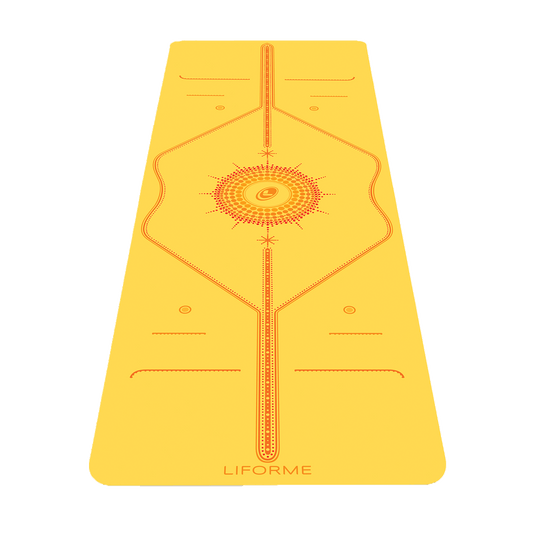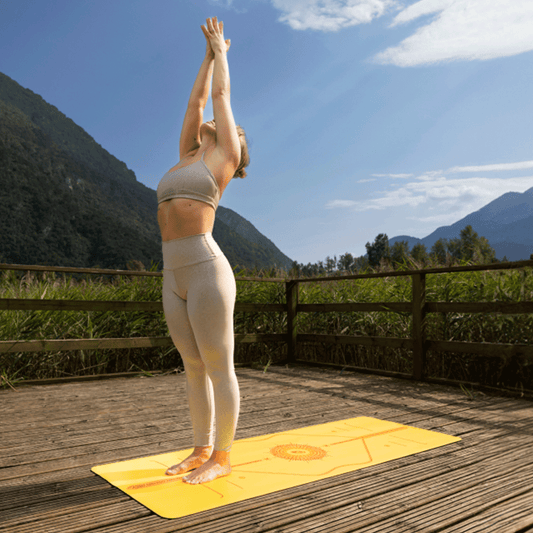Camel is one of our favourite backbends because it activates so many parts of the body and is also super adaptable. It’s an amazing stretch for the whole front body while also working both the front and back of the core. It offers a nice alternative to Wheel Pose (Urdhva Dhanurasana) for people with sensitive shoulders and wrists. There are lots of ways to customise Camel so that it works for you, including using props for more support. Poses that grow with you and fit the needs of your practice is what asana exploration is all about.
Benefits of Camel Pose
• Spinal extension
• Improves core strength
• Stretches the quadriceps
• Stretches the psoas
• Opens the chest
• Opens the throat
Instructions
1. Come to a kneeling position with your pelvis stacked over your knees and your thighs parallel. (Taking a Yoga Pad under your knees for extra padding makes this pose much more comfortable!)
2. The tops of your feet can be flat to the mat or you can curl your toes under and come to the balls of your feet. Tucking the toes raises the heels a bit, making them easier to reach. Either way, press down through the feet and knees.
3. Shrug your shoulders up to your ears and then release them down your back as you hug your shoulder blades together towards your spine to open your heart. Place your hands on your hips or take your palms to your sacrum with your fingers pointing down.
4. On an inhalation, arch your back to lift your chest toward the ceiling and take the crown of your head towards the back of the room.
5. Don’t drop the head back to the point where it hangs heavy. Instead, keep some tone in your neck so that it supports the head at shoulder level. Let your chin point toward the ceiling or tuck it if that is more comfortable.
6. Reach your hands back to your heels one at a time. If you can’t reach the heels with your toes tucked under, a block on either side of your knees (at any level) is a good alternative. You can also keep your hands on your sacrum or low back.
7. If you’re touching your heels or the blocks, use that connection to continue to draw your shoulder blades towards the spine.
8. Engage your buttocks to press your thighs forward so that your pelvis stays over your knees.
9. Hold for several breaths and then release your hands and lower your butt to your heels. Repeat the posture twice more if you like, maybe trying on a Half Camel.

Half Camel Variation
Take your right hand to your right heel as described above. Lift your left hand toward the ceiling. Stay here or continue rotating the shoulder so that your hand points toward the back of the room.
Love,
Liv x





































